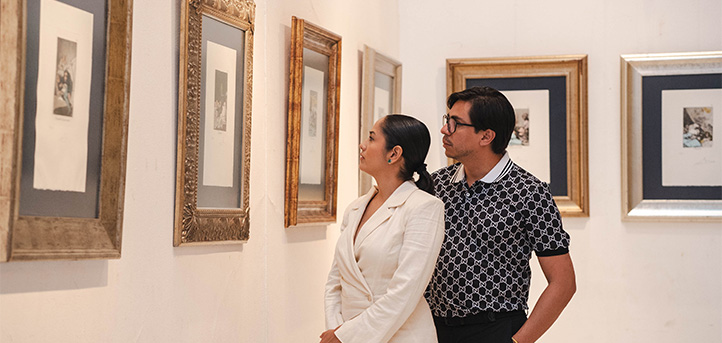The Cultural Work of FUNIBER and the European University of the Atlantic (UNEATLANTICO), in collaboration with the Rubén Darío National Theater (TNRD) of Managua, inaugurates the exhibition “Goya and Dalí: From Caprice to Folly”.
The exhibition, inaugurated on April 4 in the Glass Hall of the Rubén Darío National Theater, will be open to the public until May 4 and can be visited free of charge from Monday to Saturday, from 9:00 a.m. to 5:00 p.m. The exhibition will be open to the public until May 4.
Present at the opening event were Miguel Bonilla, director of FUNIBER Nicaragua, Ramón Rodríguez, director of TNRD and Pilar Terrén Lalana, Spanish ambassador to the country.
“This is also a platform for rapprochement and links Spanish culture with Nicaraguan culture. We as a government are grateful to the foundation and value all the gestures that have to do with the cultural rapprochement of our country”, said the director of the theater.
The collection is made up of 80 engravings by Goya and Dalí and reflects the complex genius of Goya’s art and the surreal universe, which Dalí integrated in perfect harmony with the scenes of Goya’s caprices.
In the words of Federico Fernández, director of FUNIBER’s Cultural Work and curator of the exhibition “Goya and Dalí: From Capricho to Disparate”, “Dalí, by transforming the Caprichos into surrealist works, does nothing more than turn them into Disparates, an operation that Goya had previously carried out by building his Disparates from the accumulation of elements inherited from his graphic repertoire, leaving them devoid of their historical meaning, just as Dalí does with his Caprichos. The interest in Dalí would be enough to exhibit this series, but it also provides new and important data on Goya as a pictorial antecedent of surrealism. Dalí’s intervention cannot be understood without reviewing the work of Goya’s Disparates, from which, according to our hypothesis, he extracts the resources and elements that, together with his own, are integrated into the scenes of the Caprichos, turning them into disparates”.
Dalí synchronically presents whimsy and nonsense in each plate: the social critique of whimsy, integrated in the surreal world, of the dream of reason, of the Goya-Dalinian nonsense.


